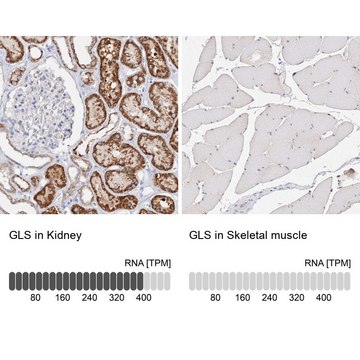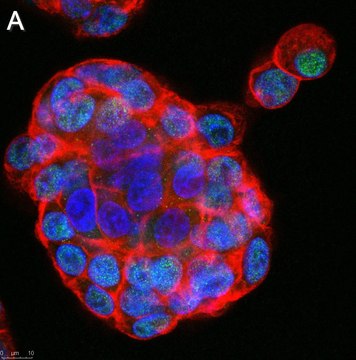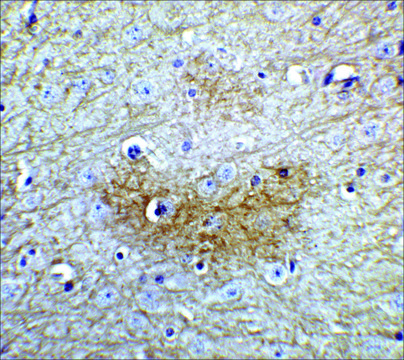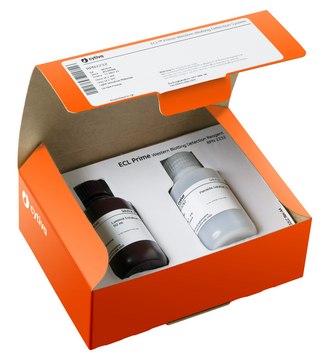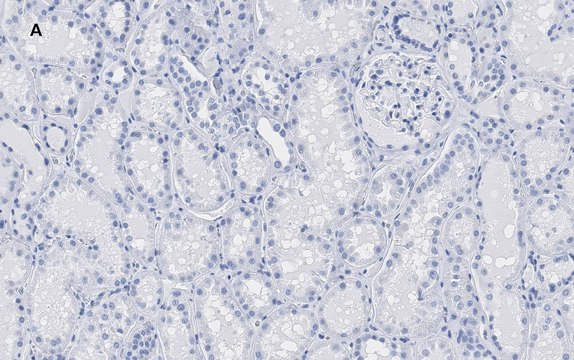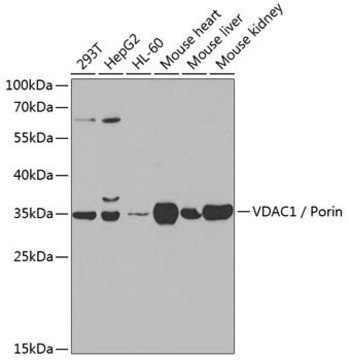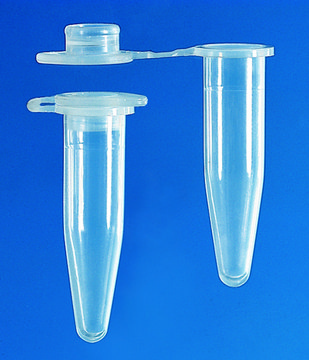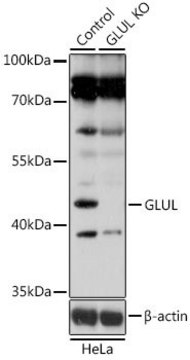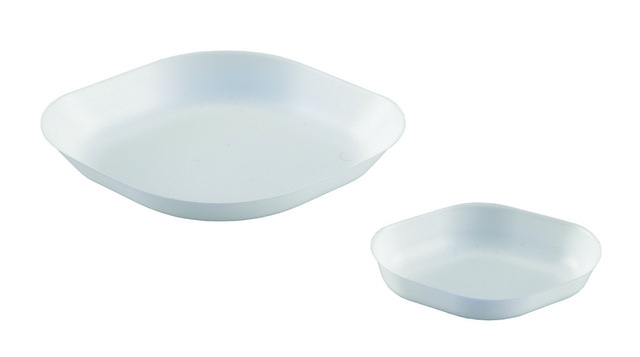一般描述
We are committed to bringing you greener alternative products, which adhere to one or more of The 12 Principles of Green Chemistry.This antibody is Preservative-free, produced without the harm or sacrifice of animals and exceptionally stable to allow for ambient shipping and storage if needed and thus aligns with "Waste Prevention", "Designing Safer Chemicals" and "Design for Energy Efficiency".
Click here for more information.
ZooMAb® antibodies represent an entirely new generation of recombinant monoclonal antibodies.Each ZooMAb® antibody is manufactured using our proprietary recombinant expression system, purified to homogeneity, and precisely dispensed to produce robust and highly reproducible lot-to-lot consistency. Only top-performing clones are released for use by researchers. Each antibody is validated for high specificity and affinity across multiple applications, including its most commonly used application. ZooMAb® antibodies are reliably available and ready to ship when you need them.
特异性
Clone 1D16 is a ZooMAb® Rabbit recombinant monoclonal antibody that detects kidney mitochondrial form of human glutaminase.
免疫原
KLH-conjugated linear peptide corresponding to 23 amino acids from the N-terminal region of human Glutaminase (GLS).
应用
Quality Control Testing
Evaluated by Western Blotting in Rat brain tissue lysate.
Western Blotting Analysis: A 1:10,000 dilution of this antibody detected GLS in Rat brain tissue lysate.
Tested applications
Western Blotting Analysis: A 1:10,000 dilution from a representative lot detected GLS in lysates from Mouse brain tissue and from PC12, SH-SY5Y, and HepG2 cells.
Affinity Binding Assay:: A representative lot of this antibody bound GLS with a KD of 2.4 x 10-6 in an affinity binding assay.
Immunocytochemistry Analysis: A 1:1,000 dilution from a representative lot detected GLS in SH-SY5Y cells.
Immunohistochemistry (Paraffin) Analysis: A 1:1,000 dilution from a representative lot detected GLS in human kidney tissue sections.
Note: Actual optimal working dilutions must be determined by end user as specimens, and experimental conditions may vary with the end user
目标描述
Glutaminase kidney isoform, mitochondrial (UniProt: O94925; also known as EC:3.5.1.2, GLS, K-glutaminase, L-glutamine amidohydrolase) is encoded by the GLS (also known as GLS1, KIAA0838) gene (Gene ID: 2744) in human. GLS catalyzes the first reaction in the primary pathway for the renal catabolism of glutamine. It is primarily expressed in the brain and kidney and plays an essential role in generating energy for metabolism, synthesizing the brain neurotransmitter glutamate, and maintaining acid-base balance in the kidney. Following its synthesis, it is found in cytoplasm and in the mitochondria. The 74-kDa cytosolic precursor is reported to translocate into the mitochondria with the help of a mitochondrial transit peptide (aa 1-54) and is processed to yield the mature 68 kDa (aa 55-669) and 65-kDa (aa 73-669)subunits. During normal acid-base balance, the kidney extraction of plasma glutamine is low, however, during metabolic acidosis, about one third of the plasma glutamine is extracted and metabolized in a single pass through kidneys. Three isoforms of glutaminase have been described in humans that are produced via alternate splicing. Isoforms 1 and 3 are activated by phosphate, while the isoform 3 lacks catalytic activity. Isoform 1 is highly expressed in brain and kidney, but is not detected in liver. On the other hand, isoform 3 is highly expressed in astrocytoma, ganglioglioma, ependymoma. Lower levels of isoform 3 are reported in placenta, lung, pancreas, and kidney, but it is not detected in liver. Isoform 2 is expressed in cardiac and skeletal muscle. Mutations in GLS gene are known to cause developmental and epileptic encephalopathy 71 (DEE71)s that is characterized by refractory seizures, neurodevelopmental impairment, and poor prognosis. This ZooMAbZooMAb® recombinant monoclonal antibody, generated by our propriety technology, offers significantly enhanced specificity, affinity, reproducibility, and stability over conventional monoclonals. (Rumping, L., et al. (2019). JAMA Neurol. 76(3); 342-350; Elgadi, KM., et al. (1999). Physiol. Genomics 1(2); 51-62).
外形
Purified recombinant rabbit monoclonal antibody IgG, lyophilized in PBS, 5% Trehalose, normal appearance a coarse or translucent resin. The PBS/trehalose components in the ZooMAb formulation can have the appearance of a semi-solid (bead like gel) after lyophilization. This is a normal phenomenon. Please follow the recommended reconstitution procedure in the data sheet to dissolve the semi-solid, bead-like, gel-appearing material. The resulting antibody solution is completely stable and functional as proven by full functional testing. Contains no biocide or preservatives, such as azide, or any animal by-products. Larger pack sizes provided as multiples of 25 μL.
重悬
300 μg/mL after reconstitution at 25 μL per vial. Please refer to guidance on suggested starting dilutions and/or titers per application and sample type.
储存及稳定性
Recommend storage of lyophilized product at 2-8°C; Before reconstitution, micro-centrifuge vials briefly to spin down material to bottom of the vial; Reconstitute each vial by adding 25 μL of filtered lab grade water or PBS; Reconstituted antibodies can be stored at 2-8°C, or -20°C for long term storage. Avoid repeated freeze-thaws.
法律信息
ZooMAb is a registered trademark of Merck KGaA, Darmstadt, Germany
免责声明
Unless otherwise stated in our catalog or other company documentation accompanying the product(s), our products are intended for research use only and are not to be used for any other purpose, which includes but is not limited to, unauthorized commercial uses, in vitro diagnostic uses, ex vivo or in vivo therapeutic uses or any type of consumption or application to humans or animals.

